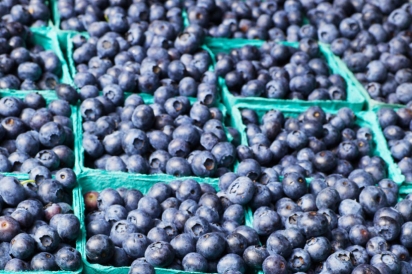Local Food: Bargain or Indulgence
Canadians are lucky. Their Freedom Food Day — the date by which they’ve earned enough to cover their annual food bills — comes as early as Feb. 9, only 11 per cent of the way through the year. And this shows that Canadians enjoy some of the lowest food costs in the world, according to the Canadian Federation of Agriculture. Even with rising food costs, Canadians spend less of their disposable income on food than previous generations. In comparison, Statistics Canada data indicates that in 1969, Canadians spent as much as 18.7 per cent of household income on food.
When it comes to local food, the general view is that it is more expensive, but is that really true? When you consider the entire food system that encompasses everything from farm to table, the answer turns out to be a lot more complex than a simple “yes” or “no.”
Every food item comes from a system that includes growing, harvesting, processing, packaging, distribution, marketing, consumption and disposal of food and food waste. Each of these steps has direct and indirect costs, which vary depending on specific practices. For example, local foods are often organic, but not in every case. And, while we assume local meat producers pay sometimes costly attention to animal welfare, that’s not true of every producer. Again, it’s complicated.
What is a local food system? A good working definition is a regional sustainable food system that aims to support local economic vitality, smaller environmental footprints, greater biodiversity and healthier foods.
“Local” is also hard to define. It can mean food produced within a certain distance from purchase point, or food produced within specific regional or provincial lines. While Ontario passed the Local Food Act in 2013, defining local as food produced and harvested within the province, there is currently no widely accepted definition in Canada. Perhaps some sort of regional definition will turn out to be the most relevant and workable. For now, consumers decide for themselves what local means to them.
Food obtained through a regional sustainable food system can sometimes cost more, but a 2012 study from the University of Waterloo suggested that higher prices were more often associated with local organic food than local product in general. A 2009 study from Iowa State University reached the same broad conclusions. And a 2011 Nova Scotian study published in the Journal of Hunger & Environmental Nutrition found that locally produced foods, though not widely available, were lowest in price.
Even if local food is a bit more expensive, it can still be a good value. As Robynne Harrison, manager at Herb & Spice in Centretown explains: “A lot of time, you pay for what you get. Many producers use local ingredients and put a lot of time and thought into their products, and that is reflected in the quality and the nourishment of their product.” Beyond that, local producers can offer more diversity because they can live with the small-scale production methods required for heirloom varieties and specialty products such as grass-fed beef and free-range poultry. Large-scale producers don’t have that luxury.
Local producers face substantial costs simply in getting their product to market. For example, a small producer selling at farmers’ markets has to pay for gasoline, vehicle maintenance and staff.
One way local producers reduce their costs is through communitysupported agriculture (CSA), an increasingly popular arrangement in which members buy shares in a farm or a market garden and receive a portion of the yield. This shared ownership reduces weather and pest-related risks for farmers and provides them with much needed capital at the beginning of the growing season. Farmers deliver produce on a regular schedule, typically at a common dropoff point, saving the labour and time they would otherwise spend at markets. But everyone benefits, since farmers pass on these lower costs to customers, who typically pay 10 to 20 per cent less than market prices.
Another way producers deliver local food to customers is through food hubs, which differ from farmers’ markets in that they aggregate products from small- and mid-sized regional producers and sell to larger customers such as restaurants, retail stores, schools and hospitals. A hub can reduce transportation costs and time spent away from the farm, help processors navigate packaging and regulatory requirements and provide access to new customers and markets. They have long been established in the United States and are beginning to appear in Ontario. Two Rivers Food Hub is already operating in Smiths Falls, and Just Food Ottawa and Natural Gourmet will launch the Ottawa Food Hub later this year.
The mainstream food system often provides cheap food, but it can come at a cost. It may create dependence and often perpetuates low labour and environmental standards. Moreover, the economic benefits have not always been realized by the farmers, harvesters, fishers and processors whose work creates what is on offer in the market. Ownership is often, though not always, held by publicly traded corporations or large private corporations. This system accounts for the vast majority of agricultural sales, estimated by the United States Department of Agriculture at 98.1 per cent of gross agricultural sales in the U.S. The Conference Board of Canada has found that the food processing industry in Canada is dominated by large, often internationally based companies. By contrast, ownership and production in a local food system are geographically localized, and motivations may focus more on factors such as community interaction, environmental concerns and quality of the product.
In other words, the direct cost of imported food may be low, but the indirect costs can be high. These indirect costs, which economists refer to as “externalities,” have a price tag that is difficult to estimate and not brought to mind when we consider our food bill.
Patricia Ballamingie, chair of Just Food Ottawa and an associate professor of environmental studies at Carleton University, points out that “our reliance on cheap oil, a favourable exchange rate between the Canadian and U.S. dollars and climatic stability are the reasons we have allowed our local productive capacity to be depleted.” Of course, all of these conditions are subject to change as recent exchange rates have shown. The Food Institute at the University of Guelph reported that in 2015, prices of fruit, nuts and produce increased between 9.1 and 10.1 per cent, mainly a result of the slipping loonie and drought in California.
Even if buying locally proved more expensive for consumers, there is mounting evidence that it produces significant benefit for local economies by keeping food dollars circulating locally. Many studies show impressive potential multiplier effects because local producers will hire local labour and contractors, pay for local utilities and boost the local economy in other ways. A multiplier factor of 1.5 means that for every dollar of local food purchased, an additional 50 cents will be spent elsewhere locally. A 2015 U.S. Report to Congress found that farmers’ market had a multiplier effect on jobs ranging from 1.41 to 1.78, and the multiplier effects of food hubs on expenditures in New York State ranged from 1.63 to 1.82. Here in Ontario, a 2009 study by Harry Cummings and Associates found that $1 spent on farm gate sales in the Temiskaming District generated between $2.80 and $3.30 in the wider local economy. Given the multiplier effect, the wisdom of saving small sums buying imported food when it can be produced regionally seems worth revisiting. On balance, perhaps many of the savings are illusory.
Apart from costs, local food can be fresher, tastier and more nutritious. Produce is picked and consumed when ripe, rather than picked green to withstand long-distance transportation. To be sure, our short growing season offers challenges, but these are not insuperable. Greenhouses effectively extend the growing season and cold storage facilities and flash freezing among other processing options preserve the nutritive value of food long past harvest. The public is showing a growing interest in preservation skills, too, as shown in the proliferation of canning and fermentation workshops.
Interpersonal connections created through local food distribution can also build “social capital” in the community. As Robynne Harrison notes, “We [at Herb and Spice] know many of our suppliers by name and by face. Community is very important and we want to support them.” Harrison adds that the relationships among local food distributors “tend to emphasize co-operation, rather than competition.” That fact alone may be enough to make us want to support local food.
As promised, the tableau is complicated. Certainly, local food is sometimes more expensive than imported, but not always. If we grant a price advantage to imported food, we note that arrangements such as community-supported agriculture and food hubs narrow that gap. There are important multiplier effects from local food that provide broad advantage to communities. The quality of local food is often exemplary. And the social capital advantages of local food provide other types of nourishment, aimed at our souls as well as our bellies.
COST OF LOCAL FOOD
While price-tags can make it seem as though local food is more expensive than imported food, supporters of local food commonly see this as comparing the proverbial apples to oranges.
Food spending Canadian consumers spend, on average, just over 10% of their income on food.
Farmers' markets A small producer selling at farmers' markets spends a large portion of their time and transportation budget attending markets, which adds cost to their products.
Community building Interpersonal connections created through local food distribution are often cited and have been documented in research as building "social capital" in the community
Food system efficiency Global food systems can offer cheap food because it is commonly produced industrially with significant consequences to labourers and the natural environment.
Multiplier effect For every dollar spent on local food, an additional $0.41 to $2.30 is generated in the wider local economy.








